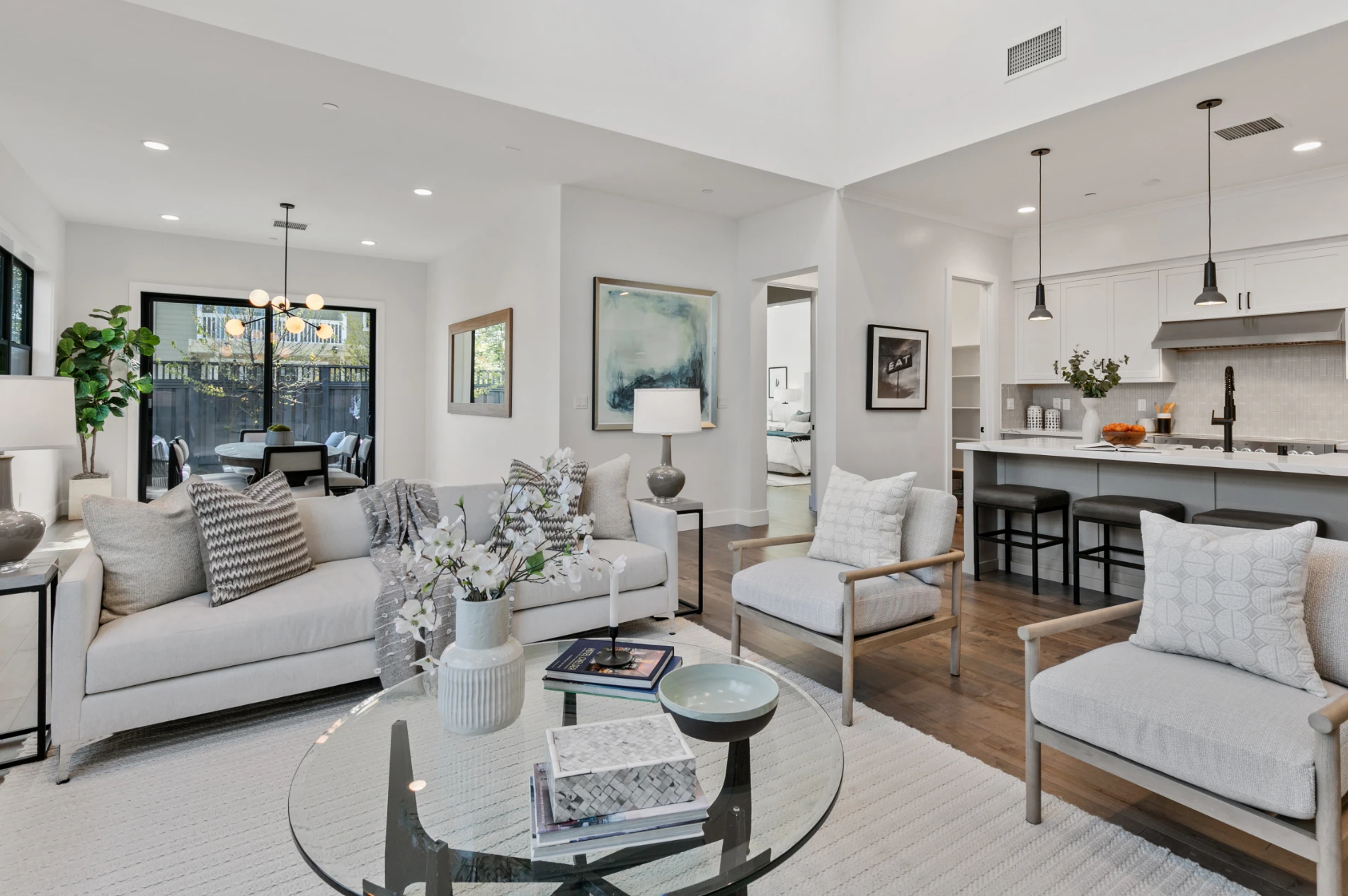The modern traditional style pairs two seemingly opposite trends in design, bringing the best of both into your home. This juxtaposition creates an intriguing interior that will undoubtedly make your guests take note. Because it pairs the current with the classic, it’s a style that’s sure to stand the test of time.
Where minimalism can often feel cold, the modern traditional style brings warmth into the home. Fabrics you want to touch soften the clean lines of modernism. Creativity meets comfort. The styles complement each other, providing balance in color, form, function, texture, and finish.
Pair clean lines with traditional elements
One way to achieve the traditional modern style is by mixing modern, clean lines with traditional architectural elements or materials in the same space.
Traditional wall coverings with modern furniture, traditional furniture with modern upholstery, things like that make for a creative take on this style concept. I like the look of a traditional area rug with modern furniture sitting on top and the space decorated with traditional style accessories and fabrics.
Courtney Huff, TJH Lead Designer
This style is flexible, because it allows you to work with the interior elements you already have in your home. If the home has traditional architectural elements—for example, decorative trim moldings—then Courtney achieves a traditional modern look by bringing in modern furniture. On the other hand, if the interior space has clean lines and angles, she furnishes the home with traditional pieces.
Contrast your colors
Contrast is key in the modern traditional home, and that holds true for the color palette. The modern traditional palette is neither light nor dark, but a perfect blend of both, with a few pops of color added in. This is not only true for paint and fabric. Also think about contrasting yet complementary stains and finishes for furniture, such as gleaming chrome next to dark wood.
TJH’s lead designer, Courtney Huff, notes that Kelly Werstler, designer of the Santa Monica Proper Hotel, does modern traditional well. Warm brown blankets sit atop crisp white sheets. Gauzy cream curtains and dark, deeply-grained wood walls are at home in the same space.
She’s defined a modern space with a juxtaposition of modern and traditional style pieces of art, sculpture, furniture, textures, finishes—and it just works.
Courtney Huff, TJH Lead Designer

Incorporate touchable texture
When selecting furniture and rugs for your modern traditional home, consider fabrics with a rich texture, such as velvet, bouclé, and woven fabrics, as well as interesting patterns. You can also add accents like a chenille throw or a soft pillow to a clean, white sofa. As with the warmer color palette used in a modern traditional home, inviting textiles add a comfortable quality to the clean lines of modern design, which can feel cold by themselves. By opting for traditional materials, you can use furniture to marry the traditional and modern within a single piece—think a couch with clean lines in a velvet or patterned fabric.

Bring in the light
Because the key to a modern traditional home is juxtaposition to achieve balance, when you bring in richer, heavier fabrics, you must pair them with something that is light.
One way to do this is by letting in sunlight with large windows or window coverings that are light in weight, appearance, and color. Incorporating open frame furniture is another way to lighten up a modern traditional home and bring an airy quality to the room.

Put your spin on it
Like the modern farmhouse style, a key feature of the modern traditional style is its versatility and ability to fit your individual tastes. Whereas pure traditional design can feel stuffy and formal, modern traditional design invites you to be playful in how you decorate.
Courtney says the modern traditional style is “unending in its ability to be refined and defined over and again.” Each homeowner will put their own spin on what modern traditional means, based on their existing interior architecture and design elements. As a result, modern traditional homes maintain their unique quality, creating a style that avoids trendiness and monotony in favor of individual personality and endless flexibility.



